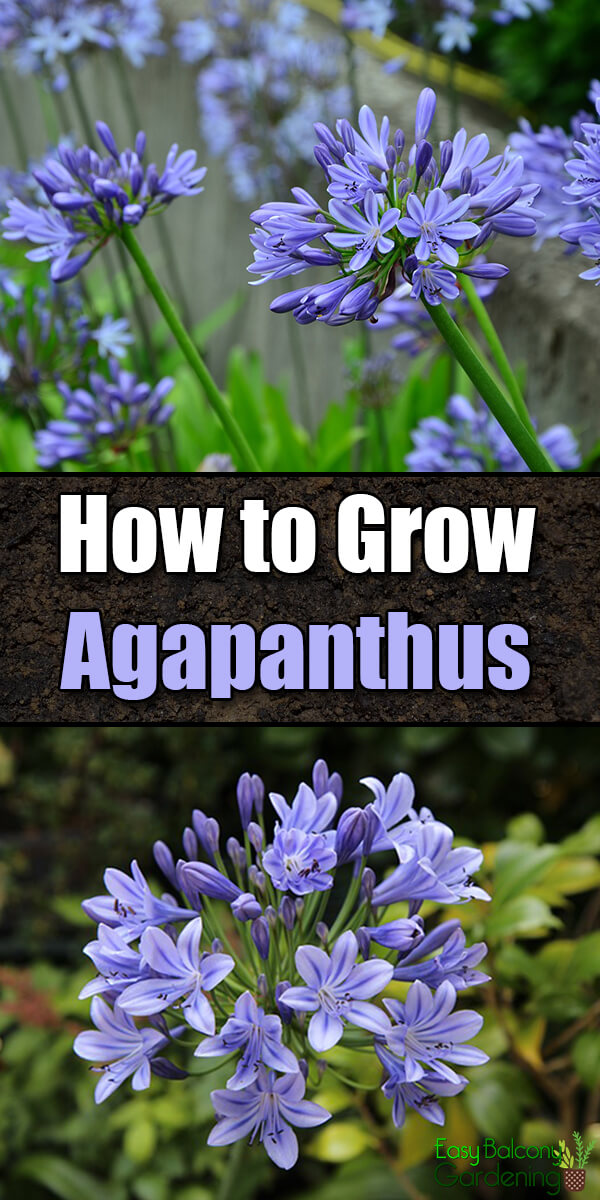The agapanthus bulbs, also known as the Lily of the Nile or African lilies, are herbaceous perennials. Butterflies, birds, and bees like them. Locate the agapanthus plants around pools, decks, and patio edges. The different varieties have varied shades of blue blooms. They make good flower arrangements.
Hardiness
Grow the agapanthus in containers if you live in zones 1-8, and bring them indoors for the winter when temperatures hit below 40°F. The agapanthus bulbs have different degrees of cold hardiness.
Propagation
Methods of propagation are from seed and by division.
From Seed
Allow the pods to dry on the plant. Break open the pods and collect the seeds. Keep refrigerated until planting. Sow the seeds thinly in deep trays (10-cm). They will germinate in six to eight weeks. Leave the seeds in the tray for the first year; the second year, pot the seedlings; the third year, plant them in permanent containers or in the ground. Blooms may come in their third or fourth year.
By Division
Lift and divide the clumps when the agapantus is root bound and flowering has just ended (early spring or late summer-early autumn). You may need two garden forks or a spade depending on the largeness of the clumps. Cut the rhizomes with a clean knife leaving some roots for each section. Trim the plants to half its length, and lessen the roots by about two-thirds. Replant right away and irrigate thoroughly.
Ground Planting
Choose a location with full sun or partial shade and where the soil drains well. For poor drainage problems, add about three inches of organic material such as peat moss, ground bark, well-rotted manure, etc. Soil pH should be 6.6 to 7.5. Soil consistency is best at one part well-rotted manure, one part loam, and one part leaf mold. Plant the rhizomes an inch deep, or deeper for zones 1-8, and space about two feet apart. Mulch well and irrigate thoroughly immediately after planting. Water deeply as needed in the spring and summer. You can let the soil dry out during the fall and winter. When the agapanthus is done flowering, leave the foliage in place. The plant will keep on gathering sunlight and gaining nourishment for the next growing season. If you are in zones 1-8, dig the agapanthus bulbs and store them for the winter.
Container Planting
Sow the bulbs about two inches deep or deeper if in ones 1-8, and about four to six inches apart. After planting, water generously checking for good drainage. Within a few weeks, the roots and top will begin to sprout. Choose the right size of containers. For single rhizomes, 12-inch pots are sufficient. You can plant up to three rhizomes in 20-inch pots. When the roots of the agapanthus are crowded in a container, the plant tends to bloom more.
Pest and Diseases
The agapanthus plants are generally pest and disease resistant.
Pests
Agapanthus may be attacked by spider mites, mealy bugs, and thrips. Use organic spray if the infestation is severe. If snails, hand pick with a gloved hand and discard.
Diseases
Botrytis will display brownish lesions and can prevent buds from opening. Since there is no cure, prevention means using organic spray before and after buds open. There is also the fungus Macrophoma agapanthii, which can be lethal and usually attacks the plant’s middle zone. You will see usually lighter olive green hues and dead plant tips. Cut back the foliage until you find healthy tissue. Burn all infected leaves. Prevent reinfection of the Agapanthus with any sulfur-based fungicide.









I love rare and unique plants! Where can I purchase the Agapanthus in seed or bulb?
Hi Gina, agapanthus can be a bit hard to find it seems, although I checked and it does look like you can get seeds from Amazon (link). But it surely wouldn’t hurt to check your local nurseries and see if they have any! I always like to shop locally when possible 🙂
What fertilizer do you recommend ? Ours have never bloomed in 3 years! Please help!
Needs to be divided
I have great success with Osmocote smart release granuals. Mine get partial sun. They have bloomed prolifically for many years now.
Our local plant nurseries all carry this… I have several in my garden…. in Massachusetts. It survives well below 40 degrees, contrary to this article.
I have a large container with many of these plants in. Always lots of green leaves, but never any flowers!
Try feeding your aggies with sulphate of potash. Sprinkle around the plants and water in. Do this a couple of times in the month before flowering is due.
I saw Monty Don on tv and he said this plant likes to be crowded in a pot. If you plant in the ground, it will do better in poor soil. If it is not flowering, he said you might want to put a grouping in a pot with an inch of room to the edge of the pot. You can plant the pot if you want it to look like it is in the ground.
I live in Hilton Head and am new to the area. I believe my zone is 8b. Would you’re recommend pot, or ground?
I have Agapanthus in 4 different places in my yard. In three of the places they grow lush green leaves and bloom profusely. The other place the leaves have not grown much and bloom very little if at all in my other 3 places some are under trees and some in the direct path sun. Any suggestions as to what I might do to get them to bloom.